The Bravia 8 is Sony’s flagship OLED model for 2024, aimed at attracting image quality enthusiasts. This television delivers outstanding picture quality with OLED’s hallmark deep blacks, vivid, precise colours, and infinite contrast, creating a highly realistic viewing experience. Dark scenes are presented with perfect black levels, while brighter elements are rendered with impressive detail, giving each frame a distinctive cinematic feel. With a 120 Hz refresh rate, the Bravia 8 ensures excellent motion fluidity, making it ideal for sports, gaming, and fast-paced movie scenes. Its ability to provide a ghost-free image allows viewers to appreciate fine details even during rapid action sequences, a feature that will particularly appeal to fans of dynamic content. Running on the Google TV platform, the Bravia 8 offers an intuitive, fast, and user-friendly interface. This system provides seamless access to popular applications and favourite content. The clear and responsive interface enhances the viewing experience, making navigation smooth and straightforward. The practical, backlit remote control adds further convenience and can be charged via USB-C, distinguishing it from traditional battery-powered remotes. This thoughtful design ensures easy use, even in low-light conditions. However, despite its strengths, the Bravia 8 does have some limitations. With an SDR brightness level of 330 nits, it may not perform optimally in very bright rooms, potentially leading to reflections or a less vivid display in strong ambient light. Users who valued the superior gradation in earlier Sony models may find this a minor drawback. Additionally, the television features only two HDMI 2.1 ports, which could be limiting for gamers who use multiple consoles or other high-bandwidth devices. Overall, the Sony Bravia 8 is a premium OLED television that excels in most areas. Its superb picture quality, advanced gaming features, and solid sound performance make it an excellent choice for a reliable OLED model in 2024. While there are some areas for improvement, particularly in SDR brightness and connectivity, the Bravia 8’s overall performance and features make it a compelling option for both everyday use and immersive viewing experiences.
- Matching (Score)
- Our verdict
- TV appearance
- Where to buy
- Contrast and black detail
- HDR effect quality
- Factory color reproduction
- Color reproduction after calibration
- Smoothness of tonal transitions
- Image scaling and smoothness of tonal transitions
- Blur and motion smoothness
- Console compatibility and gaming features
- Input lag
- Compatibility with PC
- Viewing angles
- TV efficiency during daytime
- Details about the matrix
- TV features
- Apps
- Playing files from USB
- Sound
Sony Bravia 8 (XR80) vs LG NANO82T6B
Direct compare
Check the best price offer:
Sony Bravia 8 (XR80)BRAVIA 8 / XR80


Panel type: WRGB OLED
Resolution: 3840x2160
System: Google TV
Model year: 2024
Complete the survey to find out the result

Panel type: LCD VA
Resolution: 3840x2160
System: WebOS
Model year: 2024
Complete the survey to find out the result

Overall rating
7.8
5.9
Movies and series in UHD quality
7.6
5.8
Classic TV, YouTube
8.0
5.9
Sports broadcasts (TV and apps)
8.1
5.2
Gaming on console
8.8
6.6
TV as a computer monitor
7.6
5.6
Watching in bright light
5.6
3.9
Utility functions
9.4
7.7
Apps
9.6
9.1
Sound quality
7.5
6.1
Complete the survey to find out what fits your preferences
Advantages
Excellent contrast
Google TV – intuitive system, easy access to applications, backlit remote.
Very good motion smoothness – 120 Hz, advanced smoothing system.
Great Dolby Vision support
Very good viewing angles
Superb built-in audio system
WebOS System and Magic Remote
High native contrast
USB recording
Low input lag values
Good for PC
Disadvantages
Poor gradation – visible connections on dark and light colors
Brightness during the day – better for night sessions than for use in daylight
Only 2 HDMI 2.1 ports - one of which is ARC.
Very low brightness
No Dolby Vision/HDR 10+
Does not support DTS audio format
Our verdict
The LG NANO82T is the introductory model in LG's 2024 television lineup featuring NanoCell technology. It targets a broad audience seeking a TV with an appealing and user-friendly operating system. WebOS stands out for its intuitive and swift performance, offering a wide range of apps and seamless operation. The Magic remote, functioning like a computer mouse, ensures convenient navigation. For everyday purposes, the LG NANO82T delivers reliably. It supports programme recording, enabling users to save their favourite shows, and features effective upscaling for lower-resolution content. The TV also includes AirPlay and straightforward device pairing through built-in Bluetooth.
In terms of picture quality, the LG NANO82T may not achieve top-tier brightness levels, but it offers a respectable contrast. Its VA panel ensures deep blacks and sharp details, making it well-suited for films and TV shows. Additionally, it serves as a solid choice for casual gamers and PC users. The TV boasts low input lag and essential features for PS5 and Xbox consoles, while font clarity is exceptional for PC use. Overall, the LG NANO82T is an excellent option for those seeking a versatile television with a modern operating system and innovative features that will satisfy most users.
TV appearance








Contrast and black detail
10/10
5.3/10
Local dimming function: No
Contrast:

Result
∞:1
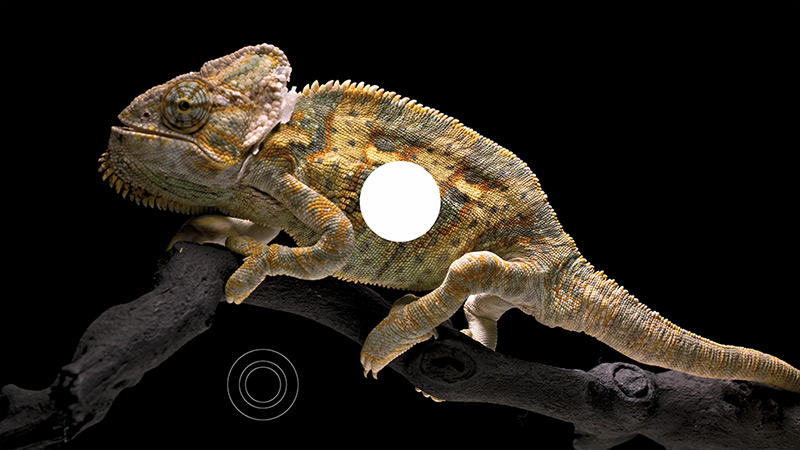
Result
∞:1

Result
∞:1
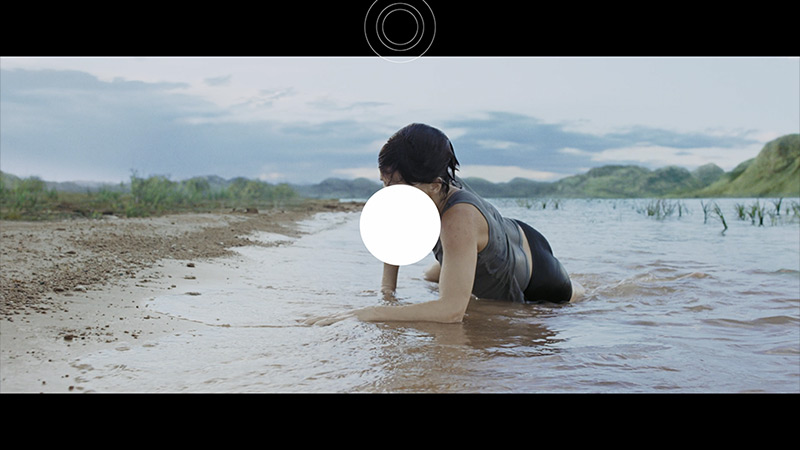
Result
∞:1

Result
∞:1

Result
4,150:1

Result
4,250:1

Result
3,800:1

Result
3,700:1

Result
3,800:1
Halo effect and black detail visibility:


The Sony Bravia 8 television, equipped with an OLED matrix, delivers exceptional picture quality with outstanding black levels and contrast. Thanks to OLED technology, each pixel emits its own light, ensuring deep blacks and precise light reproduction. During testing with scenes from films like Oblivion and The Revenant, the Bravia 8 showcased impeccable separation between light and dark elements, producing detailed and lifelike images, even in challenging high-contrast scenarios. This performance places the Bravia 8 among the top models in its class.
The LG NANO82T features a VA panel that delivers commendable native contrast. Compared to IPS panels, VA technology provides better black depth and higher contrast, resulting in more vivid and realistic images. However, the absence of local dimming—common in this price range—reveals some of the TV's limitations. Without the ability to selectively dim specific screen areas, darker sections lack the necessary precision and often appear as dark navy rather than true black. This issue is noticeable in tested scenes, such as those from The Revenant, where the overall picture quality is affected. In particular, darker scenes may lose detail, diminishing the viewing experience in low-light settings.
HDR effect quality
6.8/10
4/10
Luminance measurements in HDR:

Result
849 nit
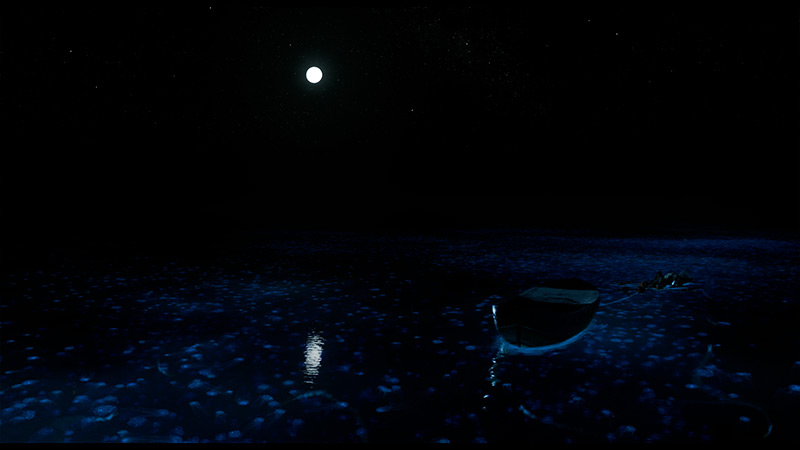
Result
865 nit
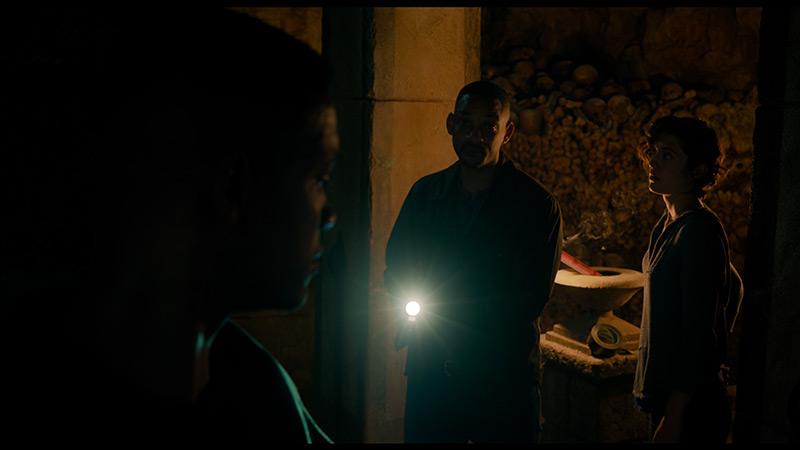
Result
888 nit

Result
880 nit

Result
469 nit

Result
247 nit

Result
224 nit

Result
282 nit

Result
185 nit

Result
286 nit
Scene from the movie “Pan” (about 2800 nits)


Scene from the movie “Billy Lynn” (about 1100 nits)


Static HDR10


HDR luminance chart:
LG NANO82T6B
HDR luminance
Sony Bravia 8 (XR80)
HDR luminance
Luminance of RGB colors
The Sony Bravia 8 performs commendably in terms of HDR brightness, reaching a peak of 880 nits. This level is sufficient to render lighting effects effectively in most scenes. In tested clips from Life of Pi and Sicario 2, the television demonstrated vibrant, detailed imagery that captured the atmosphere of these films beautifully.
However, challenges arise in scenes with consistently high brightness, such as in The Meg, where the display's limitations become apparent. In these situations, OLED technology can struggle, with brightness levels dropping to around 450 nits, which can be less satisfying when intense illumination is needed throughout a scene. Despite this, the Sony Bravia 8 remains a strong contender, offering excellent DCI-P3 colour gamut coverage and 74% BT.2020 coverage. These attributes result in rich, accurate colours and fine details, enhancing HDR content and providing an enjoyable viewing experience.
The brightness of the LG NANO82T is rather average, especially compared to other TVs in a similar price range. With a peak brightness of approximately 280 nits, it falls short of many competitors offering levels exceeding 400-500 nits. This limitation impacts the viewing experience, particularly for HDR content. Bright areas of the image may lack definition, and the HDR effect fails to deliver the dramatic impact expected from higher-end displays, making the overall image less striking in well-lit scenes.
Factory color reproduction
7.2/10
5.2/10


Factory Mode
After calibration


Factory Mode
After calibration
The best factory mode on the Sony Bravia 8 television is IMAX Enhanced, offering the most cinematic experience, though it isn't perfectly calibrated. The TV attempts to replicate cinematic settings as accurately as possible, but some issues are evident. Starting with white balance, both for SDR and 4K content, there is a noticeable blue dominance, making the image appear too cold and lacking in natural warmth. Colour Checker tests reveal a shift towards cooler tones, affecting colour accuracy and making the image feel less lifelike.
Regarding brightness and contrast, the gamma shows a significant drop towards the end of the spectrum, meaning dark details may become too shadowed, and bright areas too intense, causing a loss of subtlety and detail. This is particularly noticeable in the sky, as seen in the comparison image. Additionally, the EOTF curve is considerably above the reference value, making bright elements overly intense. As a result, users may experience an unnatural image, with bright parts losing detail and negatively impacting the overall viewing quality.
The colour reproduction in the LG NANO82T in Filmmaker mode, while the best factory setting available, does have flaws. The primary issue lies in white balance, where measurements reveal a drop in the level of blue. This shifts towards yellow hues, making the image warmer than intended. Such deviations prevent natural colour reproduction, especially in scenes with white or neutral backgrounds. For instance, in Star Wars, where numerous elements should appear white, the colours deviate noticeably. The Color Checker test corroborates this, showing some shades "escaping" into others, further highlighting the lack of accurate colour rendering.
In terms of contrast, the gamma graph analysis showed a drop to 2.1, falling short of the optimal 2.4. This leads to darker parts of the image appearing brighter, reducing depth and dynamism. Additionally, the EOTF curve, which governs brightness reproduction, shows a slight spike at the start. This can result in an excessive brightness boost in the brightest areas, causing a loss of detail in very bright scenes.
Color reproduction after calibration
8.2/10
7.6/10




The calibration process of the Sony Bravia 8 television resulted in significant improvements in image quality. The white balance was notably enhanced for both SDR and 4K HDR content, with minimal errors in the middle section of the graph. Gamma calibration was one of the biggest improvements, eliminating previous dips that had impacted brightness stability and the reproduction of detail in dark areas. The EOTF curve was also corrected, making bright elements appear more natural and improving the overall tonal balance.
However, the most attention should be given to colour reproduction, where some issues persist despite calibration. Sony has omitted the CMS system in this model, which would allow for more precise colour control. As a result, the Colour Checker test for 4K content still reveals significant colour inaccuracies. Despite these limitations, calibration is still recommended, as the improvements in brightness and contrast are noticeable and greatly enhance the overall image quality.
After calibration, the colour reproduction in SDR content on the LG NANO82T is impressive. The white balance has been effectively corrected, resulting in natural, balanced tones across various scenes. Gamma adjustments ensure more precise rendering of details in shadows and bright areas, enhancing the viewing experience. These improvements allow the television to perform well in everyday use, delivering solid colour accuracy and well-balanced images in SDR mode.
Unfortunately, the situation with HDR content is less satisfactory. The TV lacks support for a wide colour gamut, limiting the depth and richness that HDR can achieve. The EOTF curve deviates from the ideal, leading to overemphasis on details in brighter areas. This causes noticeable colour reproduction errors, as confirmed by Colour Checker tests. Additionally, the panel's low brightness further hampers HDR image quality, diminishing dynamic range effects and causing colours to appear washed out.
Overall, the TV significantly improves after calibration, particularly in SDR mode. The enhancements to white balance and gamma elevate image quality, offering more natural and cohesive colour reproduction. Compared to its pre-calibration state, the difference is evident, and the television now performs noticeably better in standard dynamic range scenarios.
Smoothness of tonal transitions
5/10
8.9/10












In 4K materials, the gradation is notably poor and disappointing. Visible seams are apparent in dark and light colours, detracting from the image quality and diminishing the overall viewing experience of high-resolution content. This is a notable weakness, as Sony's processors have typically excelled in this area, but it appears to be a failure this time.
The TV handles tonal transitions smoothly, offering high-quality images in every scene. Problems with gradation occur occasionally, mainly in darker shades, but these are subtle enough that most viewers won't notice them. Only those with particularly sensitive vision may perceive these minor imperfections.
Image scaling and smoothness of tonal transitions
6.1/10
6.4/10
Smooth transition function


Image without overscan on the SD signal


The fluidity of tonal transitions in lower-quality materials on the Bravia 8 is lacking. Unfortunately, the gentle gradation function, which was available in previous models, is missing, which is a significant drawback. The digital noise reduction feature can improve tonal transitions, but it often removes fine details, such as clouds in scenes from The Martian, which may not be to everyone's taste. On the other hand, the digital processing in the Sony XR80 is quite effective. In test scenes, it performed well without noticeable flaws, and the branches in the background remained smooth without jagged edges. This indicates that the Bravia 8 is capable of handling complex low-resolution image details with relative ease.
The LG NANO82T features a "Smooth Gradation" option for handling tonal transitions in low-quality materials. The "Low" setting improves the most problematic transitions, providing a noticeable and helpful enhancement. However, the "High" setting, while further smoothing tonal transitions, sacrifices some detail in the process. This can be a compromise that not all viewers will appreciate.
The image scaling on the LG NANO82T has some limitations, particularly when displaying lower-resolution content. The TV applies a subtle artificial sharpening, which makes the image appear sharper, but this effect is mainly due to artificial contours. Some users may find this beneficial, as it highlights details more prominently, but for others who prefer a more natural image, it may appear overly processed and artificial. This is a subjective preference that varies from viewer to viewer.
Blur and motion smoothness
8.5/10
4.8/10


Blur (native resolution, maximum refresh rate):






Blur (BFI function enabled):
Image flickers in this mode



The Sony Bravia 8 offers a maximum refresh rate of 120 Hz, ensuring smooth viewing of dynamic content such as sports and games, with sharp and fluid motion. For more demanding users, the Sony XR80 features an advanced motion smoothing system, divided into three settings: Smoothness (Film), Smoothness (Camera), and Clarity. The first two settings adjust the level of blur and smoothness, while the Clarity setting will be discussed in more detail below. Each of these parameters can be customised to suit individual preferences, allowing users to fine-tune the settings for the optimal viewing experience.
LG televisions, including the NANO82T, come with an interesting motion smoother called TruMotion providing users with control over the quality of films they watch. The TruMotion feature allows adjustment of the motion fluidity on a 10-point scale, offering a personalised visual experience.
However, when it comes to more dynamic content, such as games or action films, the performance falls short. With its 60Hz panel and relatively slow pixel response, motion fluidity is less than ideal. This results in noticeable trailing and less smooth playback during fast-paced scenes.
Overall, the LG NANO82T is a good option for those who primarily watch movies and prefer more subdued content. Viewers who prioritise fast, dynamic motion, may prefer an alternative model.
Console compatibility and gaming features
8.1/10
4.7/10
- ALLM
- VRR
- VRR range48 - 120Hz
- Dolby Vision Game Mode
- Correct implementation of HGIG
- 1080p@120Hz
- 1440p@120Hz
- 4K@120Hz
- Game bar








The Sony Bravia 8 has greatly improved its compatibility with consoles compared to earlier models. It supports variable refresh rate (VRR), which eliminates screen tearing and can sync with graphics cards for smooth visuals. The Auto Low Latency Mode (ALLM) reduces input lag, a crucial feature for fast-paced games. Additionally, Dolby Vision with low latency enhances HDR effects, offering stunning visuals during gameplay.
The Sony XR80 also includes a Game Bar, which provides quick access to settings and monitoring tools during gaming. A notable feature is the option to enable a virtual crosshair on the screen, giving players a potential advantage in shooter games.
However, there are some drawbacks. The TV lacks support for 1440p@120Hz resolution, which would benefit users with less powerful graphics cards. Furthermore, the Sony XR80 has only two HDMI 2.1 ports, one of which is typically used for connecting an audio system via eARC, limiting the number of available ports for next-gen consoles.
When playing on the console, the LG NANO82T offers several features that can enhance the gaming experience, though it also has some limitations. Notably, the ALLM (Auto Low Latency Mode) feature stands out, automatically adjusting picture settings to switch the television to low latency mode, which is especially beneficial for gamers requiring quick reactions. Another advantage is the support for HGiG (HDR Gaming Interest Group), ensuring HDR games are displayed as intended by the creators and providing vibrant and realistic visuals. These features contribute to a solid gaming experience, but there are some drawbacks, particularly in fast-paced scenes.
The LG NANO82T has limitations when it comes to advanced gaming features. It lacks support for variable refresh rate (VRR), which affects gameplay smoothness, especially in more dynamic games. The TV's 60Hz panel restricts the ability to use higher refresh rates, a significant downside for gamers seeking smoother gameplay at higher resolutions. Additionally, the absence of G-Sync technology limits image synchronisation, potentially leading to tearing and stuttering during gameplay.
These limitations mean that while the LG NANO82T offers a good gaming experience for casual gamers, it may not meet the expectations of more demanding players seeking advanced features and maximum image fluidity.
These shortcomings may mean that the LG NANO82T does not meet the expectations of the most demanding gamers looking for advanced features and the highest image fluidity.
Input lag
10/10
9.9/10
SDR
HDR
Dolby Vision
The low input lag on the Sony Bravia 8 is certainly a standout feature, with a remarkable 13 ms providing exceptional responsiveness. The Dolby Vision mode also deserves praise, as it performs exceptionally well on this model. Unlike many other manufacturers, where Dolby Vision often underperforms, it delivers its full potential here, enhancing the gaming experience.
Input lag in the LG NANO82T is exceptional, with a maximum value of just 15 ms. This impressive result ensures an immediate response to the player's movements, delivering smooth and responsive gameplay. Such low latency is crucial for players relying on quick and precise actions. Whether playing action-packed games or slower-paced ones, the TV offers an outstanding gaming experience, minimising lag and enhancing overall immersion in the gaming world.
Compatibility with PC
7.6/10
5.6/10


The Sony Bravia 8 works very well with computers, much like most WOLED matrix televisions. Font readability is excellent, making it comfortable to work with documents or browse websites. The impressive 5 ms input lag ensures excellent responsiveness during gameplay. The only downside is that fonts on a dark background appear slightly dimmed.
The collaboration between the LG NANO82T and a computer works very well. The high readability of fonts makes text-based tasks more comfortable. Additionally, the TV supports chroma 4:4:4, ensuring sharp and clear details. On-screen actions are smooth and responsive, with a low input lag of just 14 ms. However, displaying fonts on a dark green background can sometimes be distracting, which is a minor flaw. Despite this, the NANO82T offers a solid computer usage experience, combining excellent readability with responsive performance.
Viewing angles
7.3/10
2.7/10
The viewing angles on the Sony Bravia 8 are excellent, as expected from an OLED TV. The image retains its colours and contrasts even when viewed from wide angles. The only models that outperform it in this area are those equipped with MLA (Meta-Lens Array) technology and QD-OLED, which provide even wider viewing angles and superior image quality at extreme angles.
The viewing angles on the LG NANO82T are limited, which is typical for budget VA panels. When viewed from the side, colours lose their vibrancy, and contrast deteriorates. Blacks become washed out, and details become harder to discern. This can affect the viewing experience in larger rooms where people are seated at various angles. While VA panels offer better contrast and deeper blacks than IPS panels, their narrow viewing angles are a significant downside. If you often watch TV from different spots in the room, this could impact the overall visual experience.
TV efficiency during daytime
5.6/10
3.9/10




Matrix brightness
Average luminance SDR
LG NANO82T6B: 259 cd/m2
Sony Bravia 8 (XR80): 335 cd/m2
The glossy matrix on the Sony Bravia 8 effectively reduces reflections, although they take on a slightly bluish hue. However, the brightness level of 330 nits is not particularly impressive, making this TV better suited for evening viewing. During the day, to ensure optimal image quality, it's advisable to close the windows to minimise the impact of external light.
In terms of daytime performance, the LG NANO82T falls short. The satin panel offers only average reflection suppression, which can be an issue in bright rooms. The low screen brightness of just 250 nits is the main limitation, as it struggles to deliver adequate picture quality in well-lit environments. This significantly hampers its performance in such conditions, making it less suitable for bright spaces.
Details about the matrix
Subpixel Structure:


Panel uniformity and thermal imaging:


Sony Bravia 8 (XR80)
LG NANO82T6B
TV features
9.4/10
7.7/10
- HDMI inputs2 x HDMI 2.0, 2 x HDMI 2.1 48Gbps3 x HDMI 2.0, 0 x HDMI 2.1
- OutputsToslink (Optical audio), eARC (HDMI), ARC (HDMI)Toslink (Optical audio), eARC (HDMI), ARC (HDMI)
- Network InterfacesWi-Fi 2.4GHz, Wi-Fi 5GHz, Ethernet (LAN) 100MbpsWi-Fi 2.4GHz, Wi-Fi 5GHz, Ethernet (LAN) 100Mbps
- TV receptionDVB-T, DVB-T2, DVB-S, DVB-S2, DVB-CDVB-T, DVB-T2, DVB-S, DVB-S2, DVB-C
Classic features:
- Recording to USB (terrestrial TV)
- Recording programming
- Picture in Picture (PiP)
- RF remote control (no need to aim at the screen)
- Backlit remote control
- Teletext
- Audio only mode
- Bluetooth headphones support
- Simultaneous Bluetooth headphones & TV audio
Smart features:
- AirPlay
- Screen mirroring (Windows Miracast)
- Voice search
- Voice search in native language
- Ability to connect a keyboard and mouse




The Sony Bravia 8 runs on the Google TV system, offering an intuitive and user-friendly interface with access to an extensive range of applications. The interface is well-designed, with easy access to apps and features. The remote, similar to those from Korean competitors, can be charged via a USB-C port and is backlit, making it much easier to use in low-light conditions.
The TV provides a broad range of features that will satisfy most users. The Sony XR80 allows for program recording and easy connection to external devices via Bluetooth. However, it lacks the Picture-in-Picture (PiP) feature, which would enable simultaneous viewing of two image sources—a feature that could be useful in certain situations.
The design of the television is impressive, featuring a sturdy metal frame that adds an elegant touch. It stands on two adjustable feet, allowing for customisation of both width and height, making it easy to place a soundbar beneath the screen. While the Sony Bravia 8 is not the thinnest OLED on the market, its high-quality materials and meticulous finish ensure it presents well.
The LG NANO82T offers a range of features that greatly enhance user comfort. Its webOS operating system is intuitive, fast, and provides a wide selection of applications that are easy to install and operate. The Magic Remote is another highlight, functioning like a computer mouse for quick and efficient menu navigation. WebOS also includes AirPlay, allowing seamless streaming from Apple devices like iPhones and iPads.
In everyday use, the television excels. It features a recording function, enabling you to save your favourite programs for later viewing. Pairing with other devices is straightforward, thanks to built-in Bluetooth. You can easily connect headphones, speakers, or even keyboards and mice, enhancing its versatility. However, the lack of a Picture-in-Picture (PIP) function is a downside, as it would allow for simultaneous viewing of two programs. Despite this, the LG NANO82T remains an excellent choice for everyday use, offering many modern and convenient features.
Playing files from USB
8.7/10
8.2/10
Supported photo formats:
Maximum photo resolution:


The Sony Bravia 8 will satisfy most users for multimedia playback. The built-in player supports the most popular video and audio formats, ensuring seamless access to a wide variety of content. While there are some limitations with photo playback, the Google TV system allows users to install alternative players that should address these issues.
The file player in the LG NANO82T is similar to those found in other LG models and will meet the needs of most users, providing convenient and efficient playback of various video and audio files. However, more demanding users who require support for unconventional image formats may encounter some limitations. In such cases, using a computer would be recommended to achieve full compatibility with different file formats. Overall, the file player in the LG NANO82T performs its basic function well, though it may not offer the flexibility required by more advanced users.
Apps
9.6/10
9.1/10














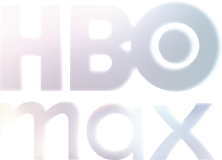































Sound
7.5/10
6.1/10
- Maximum volume--
- Dolby Digital Plus 7.1
- Dolby True HD 7.1
- Dolby Atmos in Dolby Digital Plus (JOC)
- Dolby Atmos in Dolby True HD
- DTS:X in DTS-HD MA
- DTS-HD Master Audio
The Bravia 8 has a 50W sound system in a 2.2.1 configuration, featuring speakers mounted behind the screen under the Acoustic Surface Audio system. The sound is pleasant and well-balanced, perfectly complementing the image. In terms of audio format support, the Sony Bravia 8 performs excellently, playing all popular codecs without issues and delivering a rich, immersive audio experience.
The sound quality of the LG NANO82T is decent, though not exceptional. It is equipped with two 10W speakers located at the bottom, offering adequate audio for everyday use. However, the absence of DTS format support may be a drawback for Blu-ray users who expect higher-quality sound. While the audio is sufficient for regular viewing, those seeking a more immersive experience or superior sound performance might find it lacking.
